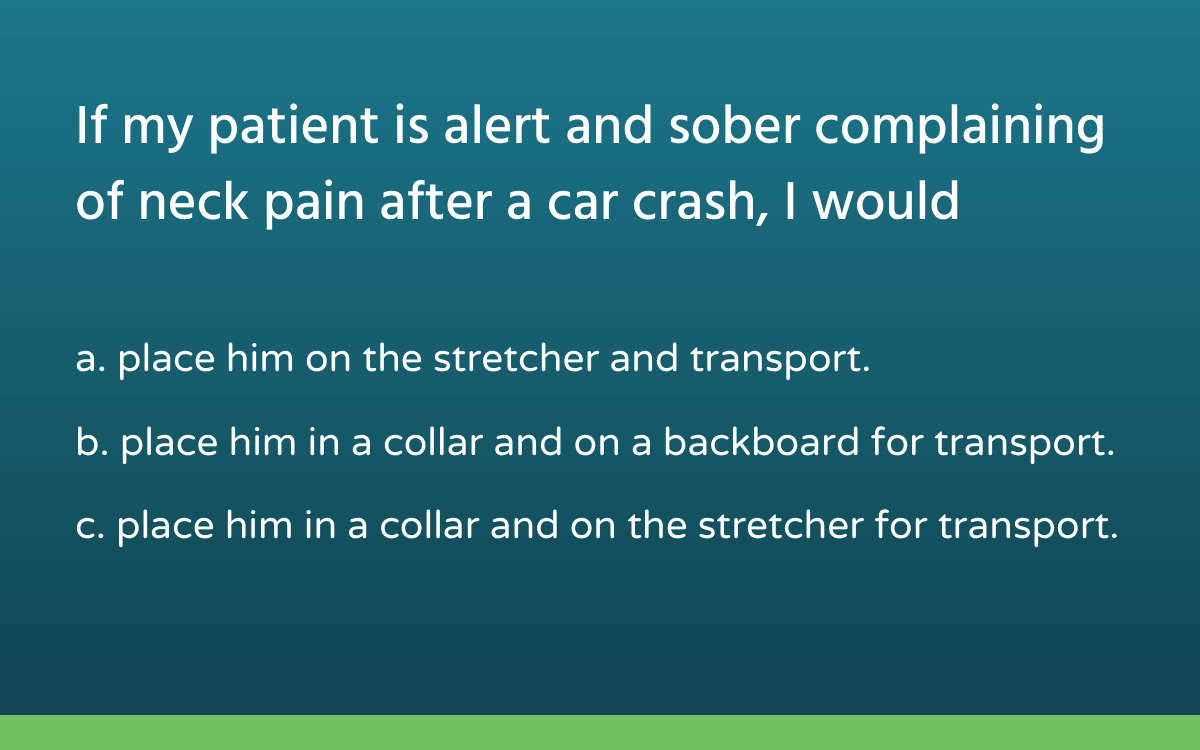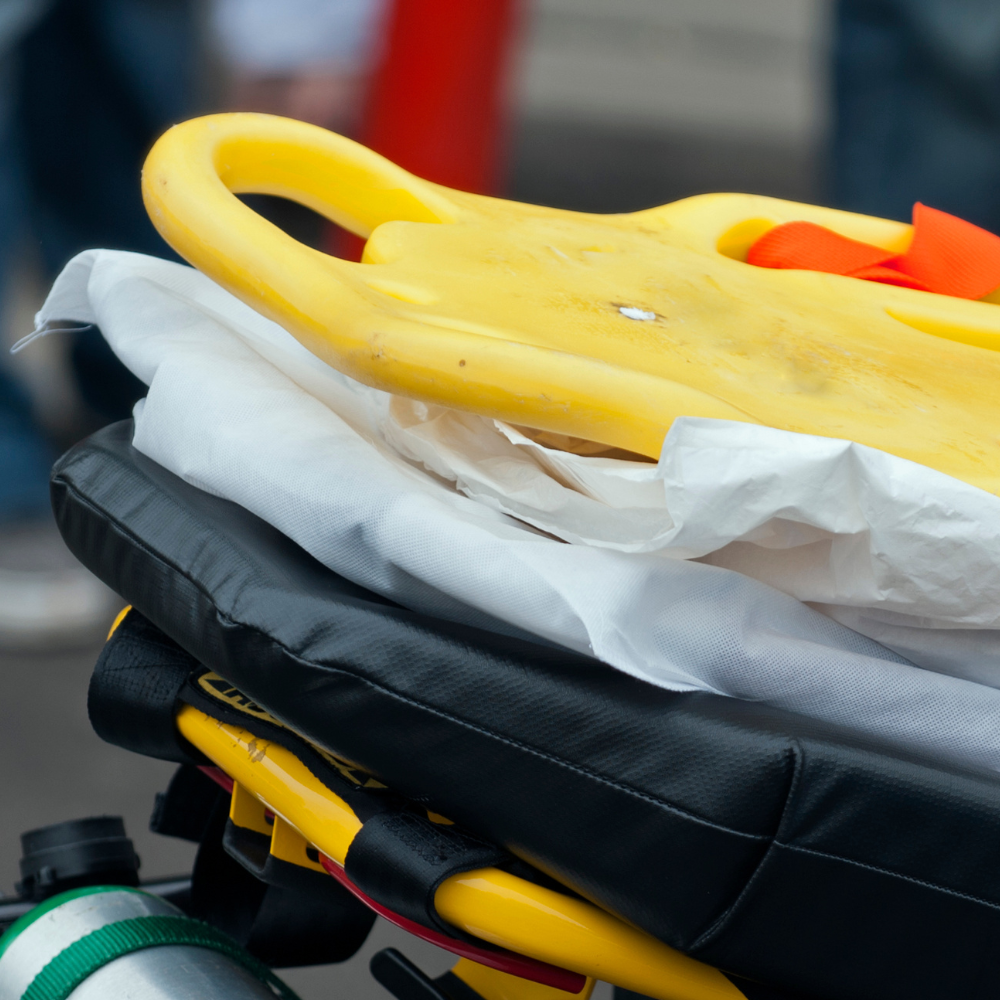
Dan Limmer, BS, NRP

by Limmer Education
Our articles are read by an automated voice. We offer the option to listen to our articles as soon as they are published to enhance accessibility. Issues? Please let us know using the contact form.
Do you know the answer to this practice exam question? We’ve used some variation of this question in Dan’s Weekly NREMT Review and on our EMT Review Facebook page a few times, and students always seem to struggle with it.

Many people don’t understand the difference between spinal motion restriction and spinal immobilization. The two terms are similar sounding but quite different in practice.
The term spinal immobilization involves the use of a backboard and suggests there should be no movement whatsoever. It misleads people into thinking they have to go to unnecessary measures to achieve immobilization. Complete immobilization is also technically impossible.
Spinal motion restriction is more realistic – a patient is placed in a collar and on the stretcher to restrict motion. It is safe – and more comfortable for the patient.
The shift in terminology went along with backboards falling out of favor. Research shows that backboards cause pain and have no proven benefit. They are seldom used anymore. Understanding the difference between the two terms is key to understanding the change in practice that spinal motion restriction represents.
You should also be aware for the NREMT (and practice) that patients with penetrating trauma do not get any spinal motion restriction at all unless there are signs of a spinal injury. Otherwise, it wastes time and has no benefit.
The National Registry has gone by updated spinal motion restriction standards since September 2016 (per their website). Yet here we are almost six years later, and some students are still being taught spinal immobilization via backboard. But catching classroom education up to current research is a topic for a different article.

For reference, here are the NREMT’s definitions:
“Spinal motion restriction is defined as attempting to maintain the spine in anatomic alignment and minimizing gross movement irrespective of adjuncts or devices.”
“…spinal immobilization is defined as the use of adjuncts (i.e cervical collar, long board, etc.) being applied to minimize movement of the spinal column.”
With all this in mind, let’s re-look at the practice question above.
Choice A: This is just a bad choice. You wouldn’t ignore a neck pain complaint. The patient needs a cervical collar.
Choice B: A lot of people choose this option when we present this question. Their logic seems sound enough: If you have to extricate the patient from the vehicle, you would roll them out onto a backboard.
Sure, that’s true. But there are two problems: One, the question doesn’t mention if the patient has to be extricated or if he was able to self-extricate. Two, even if they’re briefly on a backboard for extrication, you’re still going to slide them off the backboard onto the stretcher. You would not transport on a backboard.
Choice C: This is the correct answer, based on current research and best practices as outlined in this article.
All of Limmer Education’s products get routine updates based on AHA guidelines, new research and changing best practices. Try our PASS Apps for unrivaled NREMT prep for EMT, AEMT and paramedic, or join EMTReview.com to get access to EMT & paramedic practice tests, plus live Q&A sessions with Dan Limmer!

Dan Limmer, BS, NRP

Dan Limmer, BS, NRP